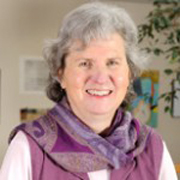Guest Blog by Kate Davies
When I do talks on environmental health, I often start by asking the audience if I can do a quick survey with them. They always agree. I begin by saying, “How many of you know someone living with cancer?” Usually, about half the people in the room raise their hands. Then I ask, “How many of you know someone living with heart disease?” Again, about half raise their hands. Finally, I ask, “How many of you know someone living with asthma?” By this time, almost everyone has raised their hands.
Chances are, you or someone you love has one these environmentally-related health problems.
It’s not surprising that our health is affected by the environment. Every day, we are exposed to hundreds of toxic chemicals in the food we eat, the air we breathe and the water we drink. About 180 diseases and disabilities have been linked with exposure to pollutants, including asthma, cancer, heart disease, birth defects, reproductive problems, and developmental and learning disabilities. According to the World Health Organization nearly one-quarter of all human illness is due to poor environmental quality. Tragically, the proportion is even higher for children – about one-third.
So what’s to be done?
Ever since 1978, when Lois Gibbs raised the alarm about the health effects of hazardous wastes leaking from an abandoned dump in Love Canal, New York, the environmental health movement has been working to prevent environmentally-related disease. Today, it’s an international movement. About 10,000 environmental health organizations and people are listed on WISER, a worldwide social networking website for sustainability. Almost 4,500 members in about 80 countries and all 50 states form the Collaborative on Health and the Environment. And these numbers are just the tip of the iceberg.
Placing human health, rather than the health of the natural world, at the center of concern distinguishes the environmental health movement from other branches of environmentalism. This may sound like a subtle difference, but it has a huge impact on how issues are framed and communicated to the public.
This approach has made the environmental health movement successful. Working mostly at the local level, activists have organized countless communities to protest abandoned toxic waste dumps, oppose new hazardous facilities, raise awareness about local disease clusters and draw attention to environmental injustice.
More importantly, it’s won numerous legislative victories at the state and local levels. . Over 900 toxics policies were proposed or enacted in the U.S. between 1990 and 2009, and between 2003 and 2011, 18 states passed 71 chemical safety laws.
This impressive record is the result of careful planning. By drawing attention to the effects of the environment on living, breathing people, movement leaders are deliberately personalizing their issues. Whether it’s a cancer survivor talking about how she copes with daily life or a mom talking about her child’s learning disabilities, the stories of real people dealing with real illnesses make environmental issues much more tangible and immediate to the public.
But more than this, the U.S. environmental health movement is transforming the environmental debate. Although scientific and economic information still dominate, its strategies are raising concerns about the ethics of environmental exposure. Based on compassion for the victims, these concerns touch people at a deep level and can inspire social action in a way that facts and figures alone don’t.
In my new book, The Rise of the U.S. Environmental Health Movement, I provide the first comprehensive assessment of the U.S. environmental health movement. It describes the movement’s historical and cultural roots and analyzes the organizations and strategies that comprise it today. By examining what has made this movement successful, the book provides insights into what social movements can do to advance positive social change.
Kate Davi es, MA, DPhil, is the author of a new book called The Rise ofthe U.S. Environmental Health Movement. She is core faculty in the Center for Creative Change at Antioch University Seattle and clinical associate professor in the School of Public Health at the University of Washington. She has been active on environmental health for 35 years in the U.S., Canada and other countries.
es, MA, DPhil, is the author of a new book called The Rise ofthe U.S. Environmental Health Movement. She is core faculty in the Center for Creative Change at Antioch University Seattle and clinical associate professor in the School of Public Health at the University of Washington. She has been active on environmental health for 35 years in the U.S., Canada and other countries.
